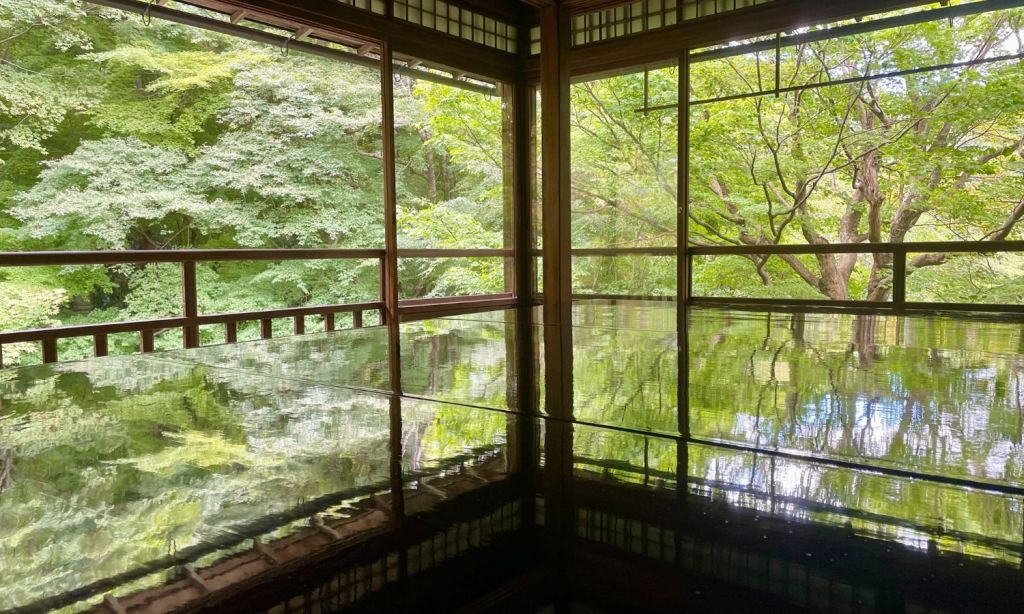Once the capital of Japan, Kyoto, on the island of Honshu, is one of the most visited cities in Japan. Visitors can admire its Buddhist temples, Shinto shrines and garden-surrounded imperial palaces and castles. The city is also known for its kaiseki dining, consisting of multi-course meals, and its geishas, female entertainers mostly found in the Gion district.
When visiting Kyoto, most tourists opt to base themselves in Kawaramachi, Kyoto’s downtown, to be close to many of the attractions. Others stay in Gion, Kyoto Station and Central Kyoto. But while those are the neighbourhoods to stay while in Kyoto, which are the ones to explore?
Ahead, we share four lesser-known Kyoto neighbourhoods to wander. They include a nature-rich neighbourhood that supplied wood to the centre of the city and another home to Fushimi Inari Taisha — the shrine famous for its many thousand vermillion gates and shared all over Instagram.
Keihoku
Nature lovers should visit the forested Keihoku area in the northern part of Kyoto City. The area was once an imperial property, with its forests supplying wood to the central part of the city. The wood from Keihoku was carried on rafts down the Hozugawa River and was used as construction material to build the ancient capital of Kyoto (Heian-kyo) and to rebuild the Kyoto Imperial Palace after it was repeatedly destroyed by fires. Today, you can visit the forests, villages and even experience a farm stay in Keihoku.
Ohara
In Kyoto City’s northeast, upstream from the Takano River and just a 40-minute drive from central Kyoto, Yase and Ohara districts offer mountain scenery that’s stunning during every season. Ohana is a farming village, best known among Japanese for a particular musical style of Buddhism called shōmyō, with most temples in the area practicing it. Spend a day here visiting historic temples, including World Heritage Site Enryaku-ji Temple at the top of Mt. Hiei, where you’ll get great views of Kyoto City.

Fushimi
Fushimi in the southern part of Kyoto City refers to the neighbourhood along the historical road between Kyoto and Osaka, Its river port is an important logistic point of water transportation. You no doubt have seen Fushimi Inari Taisha, a shrine with many thousand vermillion gates, on Instagram. Fushimi is also rich in high-quality water so is one of Japan’s most prominent sake brewing areas, with over 20 breweries. It’s been central to Kyoto’s sake production for centuries. Visit one of the sake breweries, sample the drink at a restaurant or shop here.
Mount Kurama and Kibune
Mount Kurama and Kibune are neighbouring valley areas in Kyoto’s north, worth a day trip. Start your visit by ascending Mount Kurama by cable car or on foot to Kurama Temple, which dates back to the 8th century. Mount Kurama has a history steeped in mystical beliefs, and in line with this, the temple’s main deity is said to have the power to create all things in the universe. Mount Kurama is known to be the birthplace of reiki, a holistic healing art that started in the early 1900s and is still practiced widely today.

Kibune is connected to Mount Kurama with a five-kilometre forest trail around the mountain and with temples to visit along the way. It takes about 2.5-3 hours to complete at a leisurely place. The Kibune Shrine here enshrines the deity of water, who oversees rainfall and stopping rain. The sacred water that springs from the rocks on the shrine from the rocks is used fortune-telling. In summer, Kyoto locals head to Kibune to avoid the heat. It’s famous for the ‘kawadoko’ decks built over the Kibune River, creating a natural form of air-conditioning. During the summer, you can enjoy a traditional Japanese meal on a kawadoko in this serene and beautiful place.
Related: 7 Tokyo Stays That’ll Let You Experience Authentic Japanese Culture
Related: Bowing, Slurping, and 8 Other Need-to-Know Japanese Table Manners
Read more stories from The Latch and subscribe to our email newsletter.







